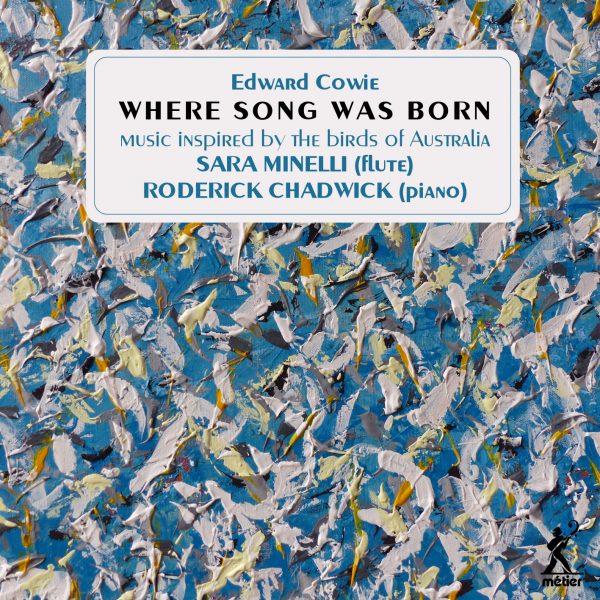Fanfare
As always, Edward Cowie has followed through and brought his listeners another collection of natural sonic portraits dedicated entirely to the birdsongs of Australia. This comes after releasing another collection of birdsongs in 2021 entitled Bird Portraits, which featured British birdsongs being played on piano and violin. Cowie promised at that time to complete this new release that was also completed during Covid-19 lockdowns, and he is now promising two additional albums! Cowie states that these will feature the birdsongs of Africa and America.
This second album in the set, Where Song was Born: 24 Australian Bird Portraits, centers around the birds of Australia where Cowie had previously spent 12 years living. After dropping an opera project, he began to dedicate his time to completing his traditional field studies focusing on science, music, and visual arts as a blended creative medium. He states that the bird songs stuck out to him immediately upon entering the natural habitat. Similar to many of his other works, these 24 short movements were based on “renderings.” For these pieces the renderings portrayed both the bird species and the habitat where the song would typically be sung. The contour of the song would also be included in the image. This means that the bird song is not identically copied, but comes very close. There are multiple images in the CD booklet that show Cowie working on the renderings out in nature. I wish that these inspirational images could be viewed somewhere to study how his ingenious method takes a visual image and creates an acoustical environmental sound to match (to put it in layman’s terms). Renderings are not included in the booklet and are not provided on the composer or record company’s website.
As in the first album, Where Song was Born also features the brilliant playing of pianist Roderick Chadwick. Instead of violin, this album features the stunning extended techniques and birdcalls of flutist Sara Minelli. For some reason Cowie feels compelled to explain in great detail why he changed the solo instrument to flute. I think it is the right call to make, especially considering the flute has been imitating birds since the beginning of time. As a wind instrument it allows many of the birdcalls to have high-level extended techniques regularly used. In my opinion the flute can better emulate the exact sound quality of each bird song better than the majority of instruments.
The listeners most likely to be drawn to this album are those who might spend a Sunday afternoon listening to the comparative birdsongs of Messiaen, while on a drive to go birdwatching. The true test of this album for other reviewers seems to be figuring out if the birdsongs are accurate or not. Cowie states in the liner notes that he wasn’t going for an exact replica, but in creating the rendering included the contour of the birdsong, creating similar patterns. I’m not an avid birder, but throughout the years I have conveniently learned a significant amount about birds. This is partly due to my love of hiking, and the fact that I have lived throughout the Midwest and southern United States.
While the Australian bird calls are certainly different than British birdcalls, all birds from the
same species tend to have similar birdsongs (as an example: wood ducks or magpies). There are websites that contain samples of each specific birdcall that many reviewers have compared the songs against. To my ear, Cowie has created a stunning sonic tapestry where the flute part specifically represents the bird, while the piano sets the natural backdrop creating a picture of the birds’ habitat. Minelli convincingly coaxes the listener to go birding by expertly executing every extended technique that exists for flute. The collaboration between Cowie and Minelli allowed them to match the proper extended flute techniques more closely to the matching bird sound. The birdsongs came to life by giving the listener accurate whistles, trills, coos, screams, and croaks of the native birds of Australia.
While listening to 70-minutes of birdsongs in a row may be a bit much for some listeners, creating this entire collection of short and semi-fragmented movements gives performers many options for contemporary recital pieces based on natural themes. Hopefully Cowie will bring us the next two albums in the set as he has promised us of birdsongs of Africa and America. I would even recommend adding a birdsongs of Asia set featuring the shakuhachi. Cowie continues to be a leading contemporary composer of music that is related to the natural world.
@divineartrecordingsgroup
A First Inversion Company
Registered Office:
176-178 Pontefract Road, Cudworth, Barnsley S72 8BE
+44 1226 596703
Fort Worth, TX 76110
+1.682.233.4978












